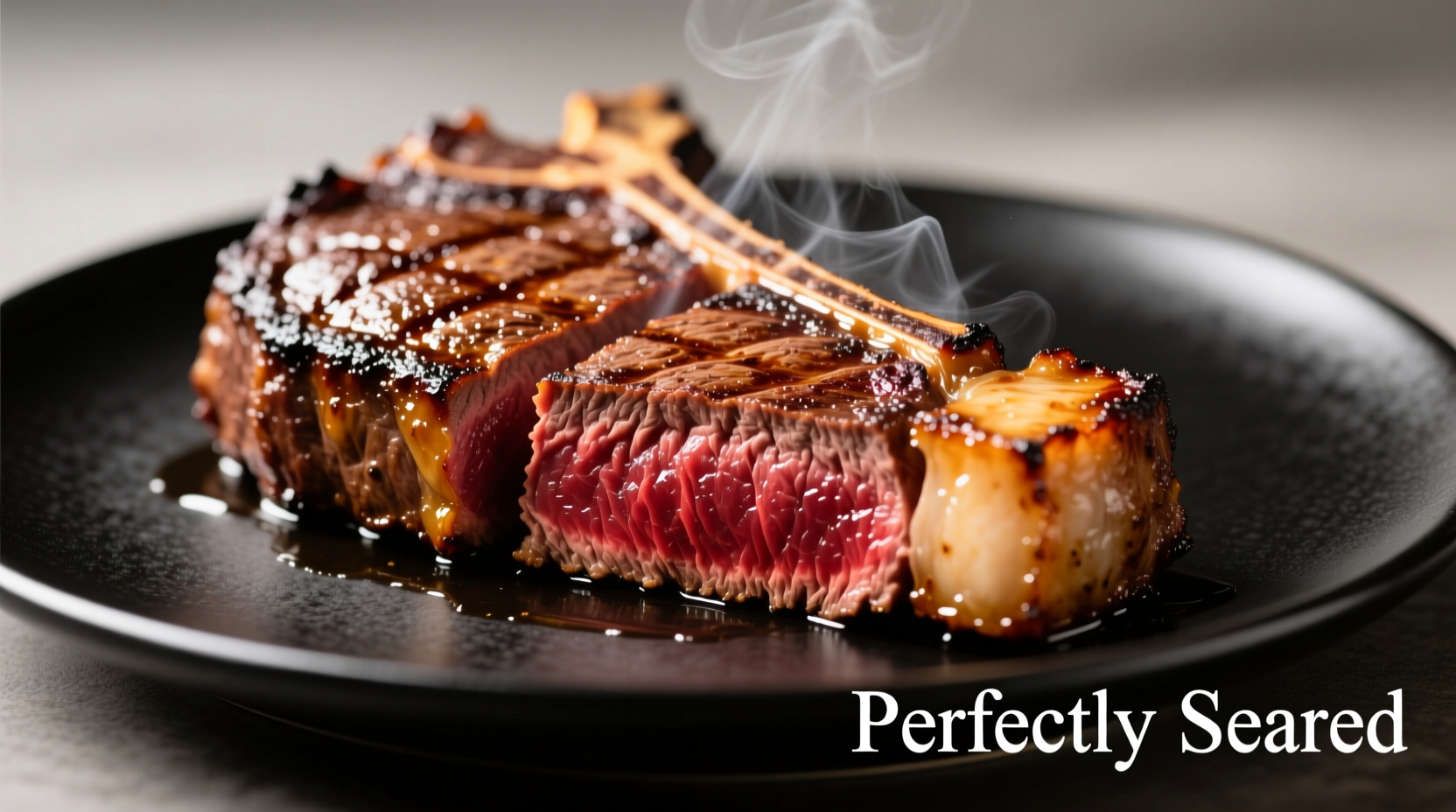The best way to cook chuck eye steak is using a reverse sear method at 275°F (135°C) for 30-45 minutes until it reaches 115°F (46°C) internally, then finishing with a high-heat sear for 1-2 minutes per side. This technique ensures perfect medium-rare doneness with a flavorful crust while maintaining the cut's natural tenderness.
Chuck eye steak, often called the "poor man's ribeye," delivers exceptional flavor at a fraction of the cost. This underrated cut from the shoulder area contains beautiful marbling that transforms into rich, beefy goodness when cooked properly. In this guide, you'll learn professional techniques to maximize tenderness and flavor from this budget-friendly cut.
Understanding Chuck Eye Steak
Chuck eye comes from the fifth rib section of the cow, connecting to the rib primal where the prized ribeye resides. According to the American Meat Science Association, this cut shares nearly identical marbling patterns with ribeye but costs 30-40% less. The key difference? Chuck eye contains slightly more connective tissue, making proper cooking technique essential.
| Cut Comparison | Chuck Eye | Ribeye |
|---|---|---|
| Location | Shoulder (5th rib) | Rib section (6th-12th ribs) |
| Price per pound | $8-$12 | $16-$25 |
| Marbling score | 7-8/10 | 8-9/10 |
| Connective tissue | Moderate | Minimal |
Preparation Essentials
Proper preparation sets the stage for perfect results. Follow these steps before cooking:
- Temperature equilibrium - Remove steak from refrigerator 60-90 minutes before cooking to reach room temperature
- Dry brine - Season generously with kosher salt (1 teaspoon per pound) 45 minutes before cooking
- Drying surface - Pat thoroughly with paper towels to ensure optimal searing
- Oil selection - Use high-smoke point oil like avocado (smoke point 520°F/270°C)

Cooking Method Timeline
The reverse sear method works best for chuck eye's unique composition. This technique gradually brings the steak to temperature before finishing with high heat.
- Low-temperature phase (275°F/135°C oven): 30-45 minutes until internal temperature reaches 115°F (46°C) for medium-rare
- Resting period: 5 minutes while heating cooking surface to 450°F (230°C)
- High-heat sear: 90-120 seconds per side for crust development
- Final rest: 8-10 minutes before slicing
Precision Temperature Guide
Accurate temperature monitoring prevents overcooking. The USDA Food Safety and Inspection Service recommends minimum internal temperatures of 145°F (63°C) for steaks, followed by a 3-minute rest.
| Doneness | Internal Temp | Timing Notes |
|---|---|---|
| Medium-rare | 125-130°F (52-54°C) | Ideal for chuck eye - retains juiciness |
| Medium | 135-140°F (57-60°C) | Maximum recommended for this cut |
| Medium-well | 145-150°F (63-66°C) | Avoid - causes toughness |
Critical Context Boundaries
Chuck eye performs best with specific cooking approaches. Avoid these common mistakes:
- Direct high-heat only - Causes uneven cooking and toughens connective tissue
- Over-marinating - Acidic marinades can break down texture (limit to 2 hours)
- Slicing too soon - Resting allows juices to redistribute (minimum 8 minutes)
- Cooking beyond medium - Excessive heat makes connective tissue rubbery
Proven Troubleshooting Tips
Professional chefs frequently encounter these issues when cooking chuck eye:
- Problem: Uneven browning during sear
Solution: Ensure steak surface is completely dry and pan is properly preheated - Problem: Tough texture despite proper temperature
Solution: Slice against the grain at 45-degree angle to shorten muscle fibers - Problem: Excessive smoke during searing
Solution: Use well-ventilated area or finish sear under broiler
Simple Serving Recommendations
Let the steak shine with minimal accompaniments:
- Finish with flaky sea salt and freshly cracked pepper
- Add compound butter (½ tbsp butter + 1 tsp herbs) during final rest
- Serve with roasted root vegetables to complement rich flavor
- Pair with medium-bodied red wine like Merlot or Malbec











 浙公网安备
33010002000092号
浙公网安备
33010002000092号 浙B2-20120091-4
浙B2-20120091-4